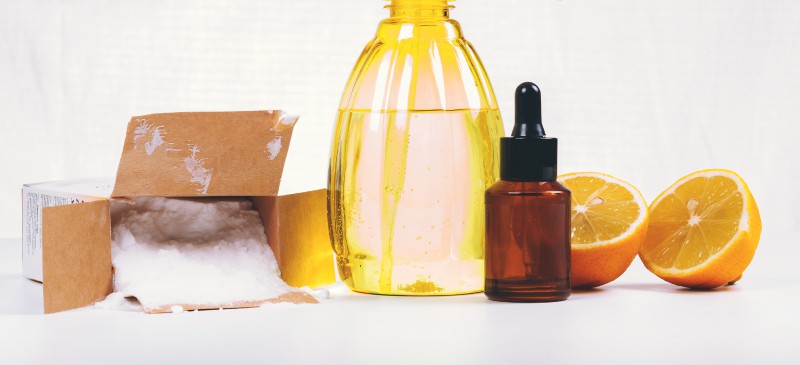This Dr. Axe content is medically reviewed or fact checked to ensure factually accurate information.
With strict editorial sourcing guidelines, we only link to academic research institutions, reputable media sites and, when research is available, medically peer-reviewed studies. Note that the numbers in parentheses (1, 2, etc.) are clickable links to these studies.
The information in our articles is NOT intended to replace a one-on-one relationship with a qualified health care professional and is not intended as medical advice.
This article is based on scientific evidence, written by experts and fact checked by our trained editorial staff. Note that the numbers in parentheses (1, 2, etc.) are clickable links to medically peer-reviewed studies.
Our team includes licensed nutritionists and dietitians, certified health education specialists, as well as certified strength and conditioning specialists, personal trainers and corrective exercise specialists. Our team aims to be not only thorough with its research, but also objective and unbiased.
The information in our articles is NOT intended to replace a one-on-one relationship with a qualified health care professional and is not intended as medical advice.
Homemade Oven Cleaner
September 26, 2016

Keeping your oven clean is very important because the burnt, baked-on food can release carcinogens as it continues to burn. Off-the-shelf oven cleaners contain a lot of toxins and if it comes in contact with your skin, you could suffer, since it can eat through your skin.
Natural oven cleaning products and green cleaning products can help, but a little baking soda and vinegar may be all you need for a homemade oven cleaner. Still not convinced? Let’s dig into the “why” a little bit.
Lye and ammonia are commonly found in oven cleaners and will break through the skin, remove layers of skin and the fumes can easily make their way into your lungs. Beyond that, once you have cleaned the oven, guess what happens. Those fumes linger and get even worse when you use the oven the bake your next delicious pie. In fact, that pie will end up completely contaminated with those toxins! You may not taste it, but they are there.
Research confirms that Easy-Off oven cleaner and Mr. Muscle oven and grill cleaner, for example, contain poisons that can cause difficulty in breathing due to the fumes as well as swelling in the throat. Some may experience severe pain in the throat, burning in the nose, eyes, ears, lips or tongue and even vision impairment. The stomach and intestines may be affected with abdominal pain, blood in the stool, burns that develop holes in the esophagus, and vomiting with blood. Fainting, low blood pressure and organ damage can occur, and the skin may get burns and holes in it, in addition to general irritation. (1)
There are a few specific ingredients that are known to cause serious health issues, specifically asthma and damage to the reproductive system, such as monoethanolamine (MEA), glycol ethers and alkyl phenol ethoxylates (APEs). (2)
Some others ingredients that you should be aware of are butane, diethylene glycol monobutyl ether (this is also found in many auto care products, at-home hair dyes, and stains or glosses for paint and wood products), monoethanolamine (MEA) and, as noted earlier, sodium hydroxide (lye). All of these ingredients can cause burns to eyes and skin upon contact, as well as burns to the mouth, throat and stomach if swallowed. (3) Butane is one of the more harmful volatile substances to inhale and can cause something called ‘sudden sniffing death’ — cardiac arrhythmia/arrest when person is stressed or does heavy exercise during or soon after being exposed to butane.
Lye, one of the main ingredients, is so powerful that it can decompose carcasses! Sodium or potassium hydroxide is used to break down the tissue of animal carcasses and even deceased humans. That’s pretty scary. And because it’s cheap, it’s found in tons of household cleaners. (4)
Some ovens contain a self-cleaning feature, and this can definitely help you avoid dangerous toxins. However, you still need to make sure you are following the directions carefully when using the feature since it can produce carbon monoxide, especially if there is a lot of baked on food in your oven.
I know plenty of people who prefer to avoid the self-cleaning feature and clean their ovens with my homemade oven cleaner instead. However, if you decide to use the self-cleaning feature, the North Texas Poison Center recommends leaving the home during the self-cleaning cycle because the Teflon coating inside the oven can release fumes when at high temperatures. The self-cleaning feature usually takes the oven to about 600 degrees — high enough to release those fumes. If inhaled, the fumes can cause flu-like symptoms and difficulty breathing. And don’t forget your pet! Pets can also experience these problems, too. (5)
Homemade Oven Cleaner
You will need the following:
- glass bowl
- a pastry brush or similar
- scrub sponge
- spoon
- gloves
First, take out the oven racks. You will need to clean them separately in your sink.
Place the castile soap and baking soda into your bowl and mix. Castile soap is a favorite of mine since it’s made with pure, chemical-free ingredients. It can gently wash your face, provide sparkling window cleaning results or offer a good scrub for the tub! For now, let’s focus on oven cleaning.
Baking soda is another great ingredient for oven cleaning, offering the abrasive texture to help remove stubborn baked-on food. You can even add a little baking soda to your dish washing cycle to help clean your dishes. Baking soda is a nahcolite, containing sodium bicarbonate, which is what helps with the cleansing process.
Now add the vinegar and orange essential oil and blend, adding water until you get a nice, thick paste-like consistency. Vinegar is antibacterial and makes for a perfect household cleaning product. Orange essential oil is a great addition, not only for a nice scent, but it’s also antibacterial and contains powerful antimicrobial compounds called terpenes.
Let’s apply this homemade oven cleaner! Using your pastry brush, brush on the homemade oven cleaner until you have coated the entire surface. Allow it to sit for about 6–8 hours or overnight works well. It will foam up just a bit, which is normal.
After you have allowed it to do its work, it’s time to wipe it clean. Using another bowl filled with water, take your sponge and begin wiping the oven to reveal the clean surface. Use the bowl of water to clean the sponge each time you wipe, but you may need to change the water a few times.
Homemade Oven Cleaner
Ingredients:
- 2 tablespoons castile liquid soap
- 1⅓ cup baking soda
- 6 drops orange essential oil (optional)
- ¼ cup organic white vinegar or apple cider vinegar
- water
Directions:
- In a glass bowl, blend all ingredients, using the water to help form a thick paste.
- Brush onto the oven surface until completely coated.
- Allow it to sit for about 8 hours or overnight.
- Wear your gloves and wipe clean using a sponge and clean water.




